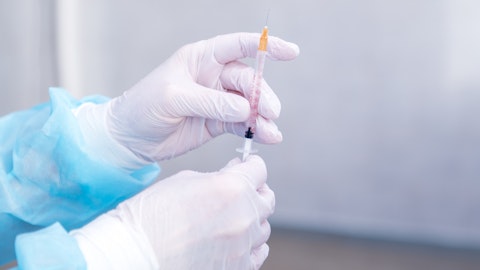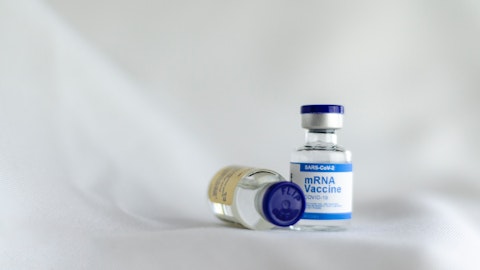And then finally, just on Zika — just in terms of reinstigating that program, what was the kind of commercial evaluation that was done in order to reinstigate that program? What are the metrics you’ve used to believe that there is a significant commercial opportunity there?
Thomas Lingelbach: So number of good questions, Max. Let me start with chikungunya. I mean, of course, as you rightly pointed out, effectiveness means that you need to provide the vaccine in a country where — or in a region where you have either an actual outbreak or where the virus is really prevalent and you see a high chance of an outbreak. This is why we are partnering with Instituto Butantan and CEPI because we believe that the best feasibility for all of that will be Brazil. And we are — and this is also part of the protocol and it takes into consideration that you have a certain setup ready and that you then go into a real outbreak like situation with the study. On your question around booster, of course, this is a very important question.
I mean you know that the booster vaccination, as shown in the follow-up studies from Phase II generates a very high anamnestic response with immunogenicity levels significantly, very significantly above . So this means whether we will need a booster every year or every other year or every third year or what it’s really going to mean, is only — this question can only be answered post efficacy study and once we see, hopefully, a correlation in between immunogenicity and efficacy. And that would then inform what kind of immunological levels need to be reached in order to have a meaningful predictive efficacy. And that’s why we continue doing the antibody persistence studies with primarily the Phase II cohorts to inform that, to inform us about this situation.
On Zika, I would like to remind everyone, so what is really the — and we have been explaining this all along a couple of times, so point #1 is, I — we have decided to reinitiate that for 2 main reasons. #1 is, we see an emerging extended logical development around Zika. We see — you see, for example, in India, Zika cases significantly on a rise. You see also here and there, spot rises on Zika virus prevalence in other countries. And the WHO issued a blueprint and white paper around the fact that post-Zika vaccines, they recommend inactivated whole virus and/or recombinant protein-based vaccines given the tolerability profile for vaccines of that class. So that’s the reason why we said let us go into that. We have also said that we’re going to monitor the, I would say, the medical or the unmet medical need, meaning the real development of the epidemiology over the course of next year.
We have built certain commercial models but we need to refine those models. And we said only if there is a continuous development on the medical need side and subsequently a favorable commercial opportunity, we will continue clinical development post the initial Phase I. And this we have also publicly disclosed.
Max Herrmann: Great. Just in terms of the field study, just to understand a little bit more and I know you obviously have been having lots of detailed discussions with the FDA about this but are you thinking about choosing a region where there have been recurrent chick infections and then setting up a program there and kind of waiting for an outbreak or are you looking at some sort of a quick response to an outbreak where you can vaccinate the population there.
Thomas Lingelbach: In reality, you can think about it, it’s almost a combination of the 2 things that you have just said. But this is the way you can think about it, yes.
Operator: There are no further questions. Speakers, please continue.
Joshua Drumm: Well, that concludes our presentation today. Thank you all for your participation. Just note that there will be an archived version of the webcast available on our website later today. Thank you, everybody.
Follow Valneva Se (NASDAQ:VALN)
Follow Valneva Se (NASDAQ:VALN)
Receive real-time insider trading and news alerts




